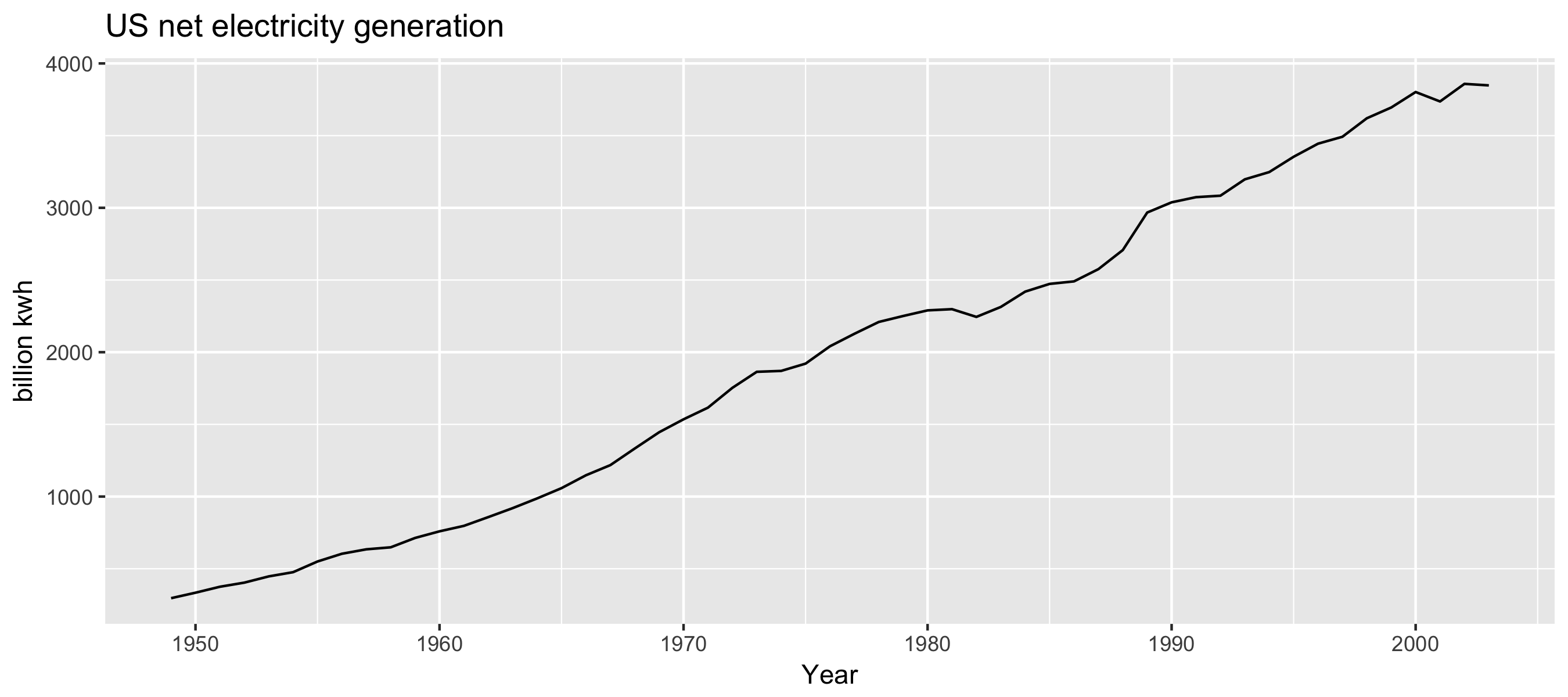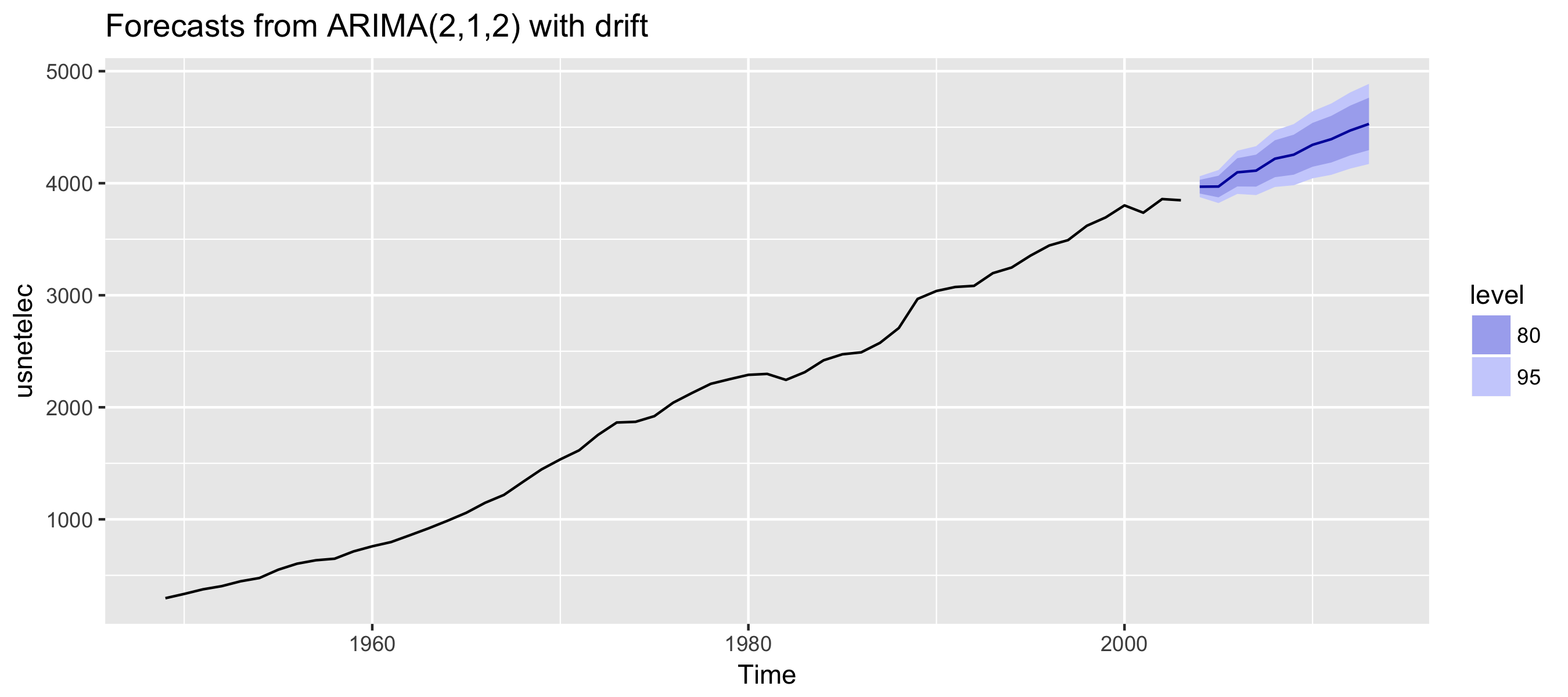ARIMA models
Forecasting in R

Rob J. Hyndman
Professor of Statistics at Monash University
ARIMA models
Autoregressive (AR) models:
- Multiple regression with lagged observations as predictors
- $y_t = c + \phi_1 y_{t-1} + \phi_2 y_{t-2} + ... + \phi_p y_{t-p} + e_t$
Moving average (MA) models:
- Multiple regression with lagged errors as predictors
- $y_t = c + \theta_1 e_{t-1} + \theta_2 e_{t-2} + ... + \theta_q e_{t-q}$
ARIMA models
Autoregressive moving average (ARMA) models:
- Multiple regression with lagged observations and errors as predictors
- $y_t = c + \phi_1 y_{t-1} + ... + \phi_p y_{t-p} + \theta_1 e_{t-1} + ... + \theta_q e_{t-q} + e_t$
ARIMA(p, d, q) models:
- Combine ARMA model with d - lots of differencing
US net electricity generation
autoplot(usnetelec) +
xlab("Year") +
ylab("billion kwh") +
ggtitle("US net electricity generation")

US net electricity generation
fit <- auto.arima(usnetelec)
summary(fit)
Series: usnetelec
ARIMA(2,1,2) with drift
Coefficients:
ar1 ar2 ma1 ma2 drift
-1.303 -0.433 1.528 0.834 66.159
s.e. 0.212 0.208 0.142 0.119 7.559
sigma^2 estimated as 2262: log likelihood=-283.3
AIC=578.7 AICc=580.5 BIC=590.6
Training set error measures:
ME RMSE MAE MPE MAPE MASE ACF1
Training set 0.0464 44.89 32.33 -0.6177 2.101 0.4581 0.02249
US net electricity generation
fit %>% forecast() %>% autoplot()

How does auto.arima() work?
Hyndman-Khandakar algorithm:
- Select number of differences d via unit root tests
- Select p and q by minimizing $AIC_c$
- Estimate parameters using maximum likelihood estimation
- Use stepwise search to traverse model space, to save time
Let's practice!
Forecasting in R

